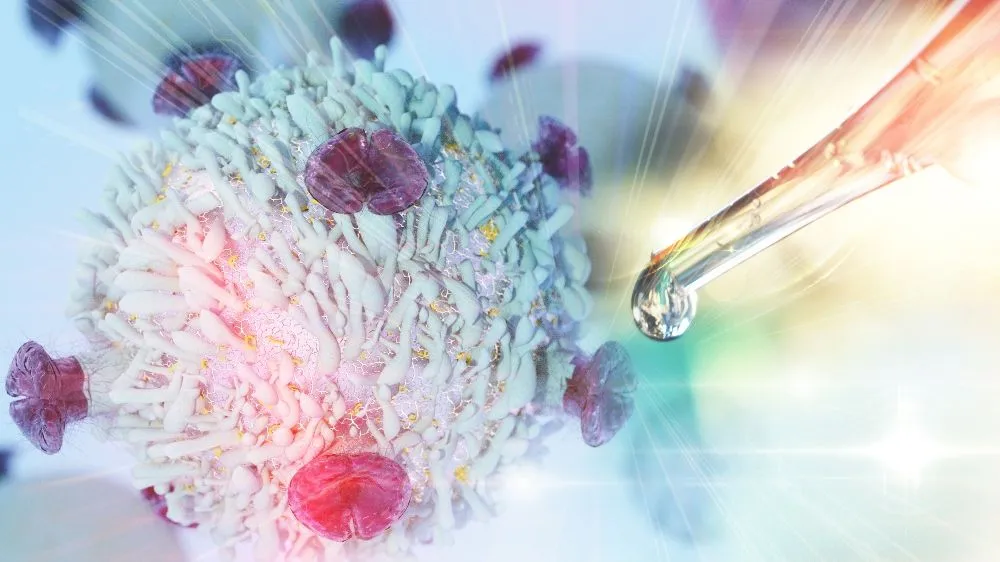Innovating a Cure for Cancer

Innovation is about problem solving, whether it's inventing the automobile or curing cancer. The history of innovation demonstrates that there may be a pattern for success - small, nimble teams of innovators, the freedom to fail, sufficient funding, and a focus on results, not process. With approximately 50% of adults getting some form of cancer in their lifetimes, creating a thriving incubator for potentially curative ideas and bringing them to the clinic quickly are problems worth solving.
Gratia Williams, a myeloma patient advocate, wants to help overcome barriers that prevent such innovation from happening. She was intrigued after reading The Death of Cancer, in which Vincent DeVita, former director of the National Cancer Institute and the American Cancer Society, writes about “an institutional history of the War on Cancer."
Gratia writes:
Given his vast experience in oncology, DeVita is able to help the reader understand the established frameworks for cancer treatments and what aspects of them need to be modified and why. Although I am unclear as to what members of the “lay community” might actually do to become advocates for curing the “ills of the cancer bureaucracy,” as one friend has phrased it, at least we can begin to educate ourselves about these issues by reading this thought-provoking book.
DeVita describes the challenges of innovating inside of a large, highly regulated institutional framework. For example, he believes the FDA is expanding its reach far beyond its intended purposes, to assure the safety of drugs.
According to DeVita, the field of oncology was boldly driven forward by a group of unorthodox researchers in the 1960s whose work benefits cancer patients today. Yet, DeVita is frustrated by the regulatory obstacles that hinder physicians’ ability to be flexible with treatments to improve outcomes for even more patients.
DeVita believes the 1971 National Cancer Act is outdated and should be rewritten to, among other things, to “create a new position, a cancer czar with budget authority over all government components of the cancer program and an office in the Executive Office Building of the White House.”
To learn more about DeVita’s views, Gratia recommends a comprehensive review in The New Yorker by Malcolm Gladwell, which she claims, “is well worth a read.”
It is no surprise that a well-established institutions like the FDA struggles with innovation and approve "unconventional" ideas. In their role as the safety gatekeeper, it's just not in their DNA. But this is no different than the challenges facing every large institution when it comes to innovation.
There are different types of innovation: Incremental innovation is using a drug in combination with another to get 6 more months of overall survival, while breakthrough innovation is using something new and radical to give patients long-term durable remissions or even a cure.
Incremental innovation is more likely to happen in large teams in established companies (or nonprofit organizations, for that matter). Breakthrough innovation is more likely to be achieved by individual researchers or very small teams.
Why? Small teams of individuals might not be more brilliant, but may simply have greater freedom and greater opportunity to take risks. They have more freedom and flexibility to test ideas that may or may not work. Ultimately, they can take more risks because they have less to lose.
I don't believe that the problem curing cancer today is a lack of ideas. There are thousands of researchers and teams with great ideas, many of whom will never get the funding they need to innovate.
For example, will the Vice President Biden’s "Moonshot" program help create newer and faster discoveries? Perhaps. But then again maybe it's not a focus on process, but a focus on results that will drive discoveries. The lone researcher in the lab may do more to cure cancer than committees or institutions. Additionally, rewarding outcomes rather than the red tape of "process" could radically change our trajectory.
This is why the Myeloma Crowd Research Initiative (MCRI) was launched, to use innovative ways to find and fund research that would make a direct impact on the lives of high-risk patients as quickly as possible. To learn more about the MCRI, click here.
Innovation is about problem solving, whether it's inventing the automobile or curing cancer. The history of innovation demonstrates that there may be a pattern for success - small, nimble teams of innovators, the freedom to fail, sufficient funding, and a focus on results, not process. With approximately 50% of adults getting some form of cancer in their lifetimes, creating a thriving incubator for potentially curative ideas and bringing them to the clinic quickly are problems worth solving.
Gratia Williams, a myeloma patient advocate, wants to help overcome barriers that prevent such innovation from happening. She was intrigued after reading The Death of Cancer, in which Vincent DeVita, former director of the National Cancer Institute and the American Cancer Society, writes about “an institutional history of the War on Cancer."
Gratia writes:
Given his vast experience in oncology, DeVita is able to help the reader understand the established frameworks for cancer treatments and what aspects of them need to be modified and why. Although I am unclear as to what members of the “lay community” might actually do to become advocates for curing the “ills of the cancer bureaucracy,” as one friend has phrased it, at least we can begin to educate ourselves about these issues by reading this thought-provoking book.
DeVita describes the challenges of innovating inside of a large, highly regulated institutional framework. For example, he believes the FDA is expanding its reach far beyond its intended purposes, to assure the safety of drugs.
According to DeVita, the field of oncology was boldly driven forward by a group of unorthodox researchers in the 1960s whose work benefits cancer patients today. Yet, DeVita is frustrated by the regulatory obstacles that hinder physicians’ ability to be flexible with treatments to improve outcomes for even more patients.
DeVita believes the 1971 National Cancer Act is outdated and should be rewritten to, among other things, to “create a new position, a cancer czar with budget authority over all government components of the cancer program and an office in the Executive Office Building of the White House.”
To learn more about DeVita’s views, Gratia recommends a comprehensive review in The New Yorker by Malcolm Gladwell, which she claims, “is well worth a read.”
It is no surprise that a well-established institutions like the FDA struggles with innovation and approve "unconventional" ideas. In their role as the safety gatekeeper, it's just not in their DNA. But this is no different than the challenges facing every large institution when it comes to innovation.
There are different types of innovation: Incremental innovation is using a drug in combination with another to get 6 more months of overall survival, while breakthrough innovation is using something new and radical to give patients long-term durable remissions or even a cure.
Incremental innovation is more likely to happen in large teams in established companies (or nonprofit organizations, for that matter). Breakthrough innovation is more likely to be achieved by individual researchers or very small teams.
Why? Small teams of individuals might not be more brilliant, but may simply have greater freedom and greater opportunity to take risks. They have more freedom and flexibility to test ideas that may or may not work. Ultimately, they can take more risks because they have less to lose.
I don't believe that the problem curing cancer today is a lack of ideas. There are thousands of researchers and teams with great ideas, many of whom will never get the funding they need to innovate.
For example, will the Vice President Biden’s "Moonshot" program help create newer and faster discoveries? Perhaps. But then again maybe it's not a focus on process, but a focus on results that will drive discoveries. The lone researcher in the lab may do more to cure cancer than committees or institutions. Additionally, rewarding outcomes rather than the red tape of "process" could radically change our trajectory.
This is why the Myeloma Crowd Research Initiative (MCRI) was launched, to use innovative ways to find and fund research that would make a direct impact on the lives of high-risk patients as quickly as possible. To learn more about the MCRI, click here.
about the author
Jennifer Ahlstrom
Myeloma survivor, patient advocate, wife, mom of 6. Believer that patients can contribute to cures by joining HealthTree Cure Hub and joining clinical research. Founder and CEO of HealthTree Foundation.
More on Navigating Your Health
Trending Articles




Get the Latest Multiple Myeloma Updates, Delivered to You.
By subscribing to the HealthTree newsletter, you'll receive the latest research, treatment updates, and expert insights to help you navigate your health.
















